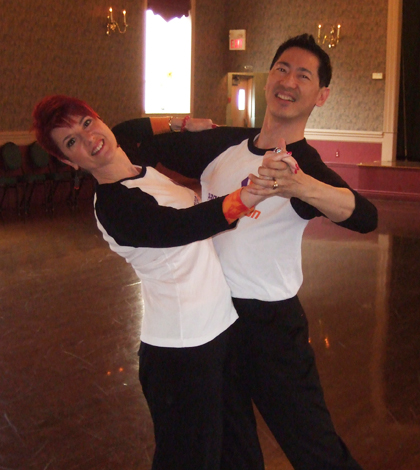The Art of Dance: Health Benefits, One Step at a Time
By Suzanne Soto-Davies
There is a reason why Seasonal Affective Disorder (SAD) is also known as “winter depression” or “winter blues”. Winter months are typically less sunny times, but people also spend less time outdoors, directly exposed to sunlight which provides natural Vitamin D, and less time leaving their home.
In addition, the World Health Organization (WHO) reports that 121 million people worldwide are affected by depression. This depression puts on an enormous strain on governmental health budgets, and individual treatments are constantly being sought out.
Research evidence suggests that exercise has positive effects on mood. Similarly, it has been agreed that dance has a positive social-cultural influence on a person’s wellbeing. These results have impacted how we see movement and dance, and the trend to strengthen this belief is growing rapidly to become one of the most current treatments for depression.
Dance (movement) therapy (D/MT) is proving a great method against depression stemming from such illnesses as breast cancer, dementia, Parkinson’s disease, heart conditions, diabetes type 2, Fibromyalgia. It has also been shown to reduce feelings of isolation, promote communication, inspire to learn, and even reduce visits to the doctor and medical intake.
Research also shows dance has a positive impact on body image, shoulder range of motion, balance and coordination, and a great natural anti-depressant. It has been argued that the results are because of the emotional connection a dancer will have with a particular type of music, and whether it’s also because they’re typically involved socially when dancing – regardless, dance is one of the best exercises one can perform.
Styles of dance
Tango dance has been shown to reduce distress and insomnia for individuals with mood disorders such as bipolar, depression, anxiety, and even seasonal depression disorders. After having taken Tango dance classes, individuals describe feeling less anxious, less stressed (or more “able to cope with daily stress”), satisfaction with life, and mindfulness.
13 various publications carried out from 1995 to 2011 report that Ballroom dances improved balance and coordination in patients with Parkinson’s disease, heart failure patients, and diabetic patients. All describe an increased positive self-image and profound overall excitement of life.
Many new forms of dance have been recently developed to also incorporate a more aerobic style of dance – such as danceTONE and Zumba. These dance styles teach routine steps and easy techniques which students can learn as they go, and feel they have received a good workout upon class completion.
Dance is a method of movement in which different aspects of the body are explored – from body expression, mimics, touch, to the listening of the music, following beats and the satisfaction of learning something different and new. These strategies aid in the integration of mind and body, connecting emotions and unconscious impulses.
During winter months, it is especially important to take part in physical activities that involve an individual outside of their home. For some, swimming is an excellent exercise, since it’s non-invasive and comfortable to perform regardless of age. For others, the idea of dressing in a bathing suit with unknown individuals is prohibitive for their comfort level.
This is where dance classes play a big role: Wear what you’re comfortable with, move as you are able to, learn what you can and enjoy in your surroundings. The toughest factor about learning to dance a particular routine, is to allow yourself to “let go” and don’t be so hard on yourself if you cannot follow the class exactly as taught.
Dance, is an art. And as such, it must be interpreted individually. Such as not everyone enjoys the same paintings or sculptures, not everyone dances the same. Dance is about allowing yourself to explore and realizing you are worthy of enjoyment too!
Dancing in general is usually enjoyable, uplifting, and more engaging, unlike other types of exercise. Another advantage of dance therapy is the nonverbal communication, which enables participants to express their feelings without words.
This might be helpful when normal communication is absent or has broken down – i.e: Dementia. As with any exercise routine that one has to exit the home “security” for, self encouragement is required in order to grow the courage to participate. If there is a partner, friend, neighbour or sibling who may be interested, this increases the odds of getting involved and sticking to it.
All dance schools in our community allow for free visits to the dance studio to either participate or just watch. This is a great way to encourage yourself without feeling “on the spot”, and mustering up the will to participate next time. Social interaction plays a huge role in fighting the feelings of loneliness and depression sometimes associated with the winter months.
As we head into the gloomy winter months, consider how you will spend your free time. Explore a dance studio nearby, and experience various styles of dance. Who knows, these may be the best winter months of your life! •
—
Reprinted from the Winter 2013-2014 Edition of Silver and Gold Magazine, now available at newstands throughout Hamilton, Halton and Surrounding Areas.
Research: School of Health Sciences, Queen Margaret University, Edinburgh, Scotland; Association for Dance Movement Psychotherapy, UK.; Dance Movement Therapy: a Creative Psychotherapeutic Approach, Meekums 2002.
